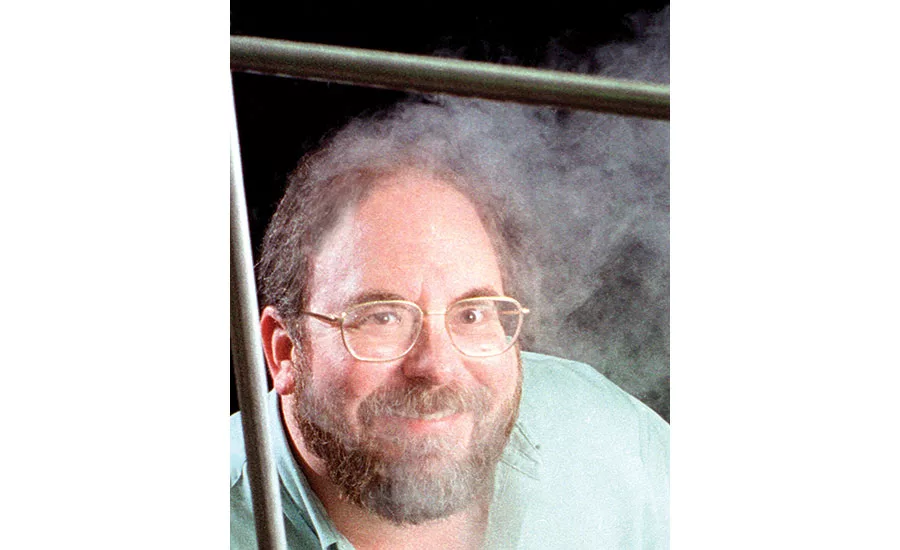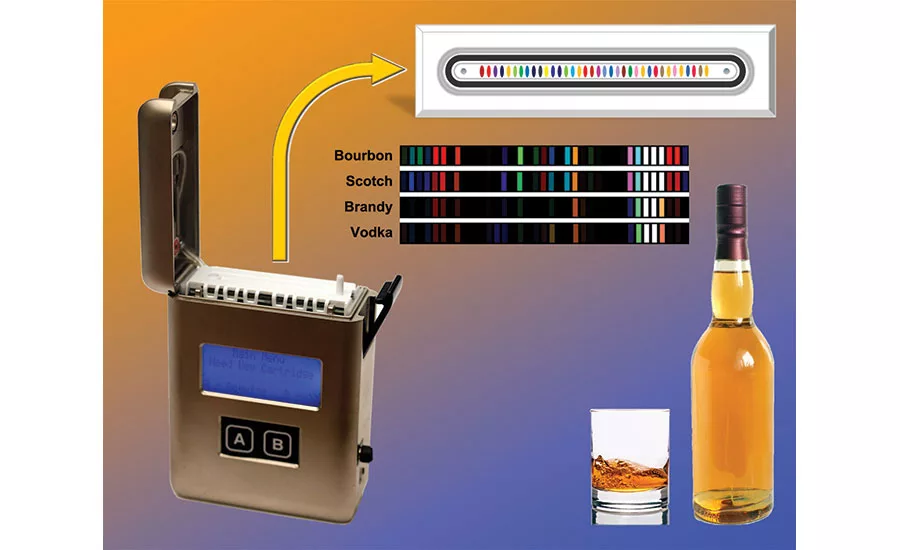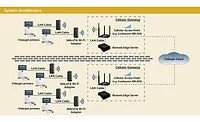Engineering R&D
Optoelectronic nose can offer new options for checking quality
Based on a handheld reader for colorimetric sensor arrays, the optoelectronic nose can monitor meat freshness or detect fraudulent whiskeys



This handheld analyzer with colorimetric sensor array is able to identify liquors and determine if they are real or counterfeit.
Photo courtesy of Kenneth S. Suslick
Published in July 2015 by the American Chemical Society, “Hand-Held Reader for Colorimetric Sensor Arrays” by Jon R. Askim and Kenneth S. Suslick, Marvin T. Schmidt research professor of chemistry, Department of Chemistry, University of Illinois at Urbana-Champaign, described a low-noise and highly accurate instrument, which could be used to perform real-time chemical analysis at scan rates up to 48 Hz.
Extending this technology further to build an “optoelectronic nose,” Suslick and postdoctoral research associate Zheng Li, have devised and published methods to monitor the freshness of five meat products in 2016, which includes beef, chicken, fish, pork and shrimp, and to identify liquors in 2017.
This simple, onsite device requires none of the complexity, space and operator experience of high-end analytical instrumentation, yet promises the accuracy and precision needed to make qualitative decisions about meat quality and to determine if high-value alcoholic beverages are counterfeits or have been tampered with.
FE: How does the device work? Is it analogous to a spectrophotometer?
Kenneth S. Suslick: It’s a digital, multidimensional extension of litmus paper. We use an array of chemically responsive dyes (like the dyes in litmus or pH paper or even black tea when lemon is added), and it’s the pattern of their color changes after exposure to a vapor that tells the identity of the vapor being sniffed. For analysis of the color changes, we use the red, green and blue values from an ordinary camera (even cell phones) or line scanner (like the ones used to scan business cards). Using RGB values is a poor man’s scanning spectrophotometer, especially since there are now roughly twice as many cameras on the planet than people!
FE: How are liquid or meat samples prepared for analysis? Is it simple to do?
Suslick: We put a small sample (less than a gram) in a vial and sniff the headgas through a Teflon tube. Couldn’t be simpler. The device is portable and self-contained. In the field, you might use it to test samples in “rickhouses” (i.e., where barrels are aged) or even in local bars to keep the barkeep honest.
FE: Electronic noses were first proposed in the 1980s. What were their limitations, and what are the differences in today’s technology?
Suslick: There are several “dirty secrets” about traditional electronic nose technology. The first is that traditional sensors are very sensitive to changes in humidity and that humidity changes by thousands of ppm on an hourly timeframe; if you want to detect sub-ppm volatile organics, that response to humidity is a killer. The second problem is that sensors age when exposed to the chemical environment, but all nose technology relies on matching patterns to a library, and you can’t afford to make a new library every day or even week, so aging of sensors is catastrophic. Finally, prior technology only looked like an array; the interactions of analytes with all the sensors in the “array” was really mostly one-dimensional (i.e., hydrophobicity), and so, the ability to tell apart subtle differences among analytes was very limited.
Our new approach uses sensors that do not respond to changes in humidity and are meant to be disposable. That means that every new sensor is like every other one, so you don’t need to worry about sensors aging, and the library is forever. Because the arrays are disposable (cost is under $1), we are also able to use strong chemical interactions that would poison traditional sensors; strong interactions make the data multidimensional (and therefore able to discriminate among very similar analytes) and much more sensitive.
FE: Just how sensitive and accurate are these devices? Do they compare with HPLC or GC-MS?
Suslick: Our sensitivities are considerably better than GC-MS, often down in the low ppb regime, without pre-concentration. We typically strive for quantitative results with less than 10 percent errors in concentration, but we can be truly quantitative (<1 percent) when necessary.
FE: Can the optoelectronic nose determine if pure grain alcohol and water are added to a popular beverage? Whether a single-malt Scotch has been mixed with another Scotch?
Suslick: Yes. We demonstrated, for example, that even 1 percent watering of whiskey was detectable. If two very similar Scotches were mixed, we would be able to tell that it wasn’t purely one or the other, but might not be able to tell you what mixture it specifically was.
FE: Could this technology be adapted for checking the purity of high-end juices like pomegranate (POM) or high-end cooking oils, both categories of which fall prey to fraud and adulteration?
Suslick: We’ve done beers, soft drinks and coffees in past publications, and also quantitatively monitored the freshness of meats (beef, pork, chicken, cod, shrimp) during storage. POM would be easy, too, due to its volatiles. Oils might be more problematic depending on how much the volatile components change; olive oils would be doable, coconut oil maybe not so easy, simply because it has so little aroma.
FE: Have you been working with food and beverage processors to test your device?
Suslick: Not yet.
FE: When will this device become commercially available?
Suslick: The technology is being commercialized by iSense LLC, located in Mountain View, CA (in Silicon Valley). We expect to have a marketable device within a year.
FE: Do you see yourself partnering with any food or beverage companies?
Suslick: iSense is certainly interested in doing so.
FE: For what other related applications might this technology work?
Suslick: Other applications include rapid identification of bacteria during culturing, including determination of strains of bacteria and their antibiotic resistance. This is important for obvious biomedical detection of infection, but also for QC of personal care products that must be screened for bacterial contamination before shipping to market.
For more information, visit www.scs.illinois.edu/suslick
Looking for a reprint of this article?
From high-res PDFs to custom plaques, order your copy today!








